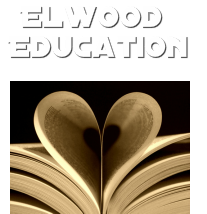PRIMARY VERSUS SECONDARY SOURCES
Students sometimes get these terms confused. When expressing a view, analyzing, or simply clarifying points about a certain literary piece (the target text) or regarding a position about a philosophical point (an essential question), sources will be used, both primary and secondary, depending upon need and topic.
Here is an excellent explanation about the difference between two types of sources, taken directly from Tyler Moss's article "Past Perfect" in Writer’s Digest (September 2014).
Primary sources are documents actually written by an individual of the time period, providing direct insight into a subject’s frame of mind without being filtered through a third party. Examples include letters, diary entries, autobiographies, speeches, and even music, art and photos. For example, writer Ransom Riggs used his collection of vernacular photographs to inspire his 2011 bestseller, Miss Peregrine’s Home for Peculiar Children.
Secondary sources, on the other hand, are materials from historians, journalists, biographers and others who attempt to interpret and analyze events for us. Examples include magazine articles, textbooks, documentaries, encyclopedias and books of historical inquiry.
Here is an excellent explanation about the difference between two types of sources, taken directly from Tyler Moss's article "Past Perfect" in Writer’s Digest (September 2014).
Primary sources are documents actually written by an individual of the time period, providing direct insight into a subject’s frame of mind without being filtered through a third party. Examples include letters, diary entries, autobiographies, speeches, and even music, art and photos. For example, writer Ransom Riggs used his collection of vernacular photographs to inspire his 2011 bestseller, Miss Peregrine’s Home for Peculiar Children.
Secondary sources, on the other hand, are materials from historians, journalists, biographers and others who attempt to interpret and analyze events for us. Examples include magazine articles, textbooks, documentaries, encyclopedias and books of historical inquiry.
